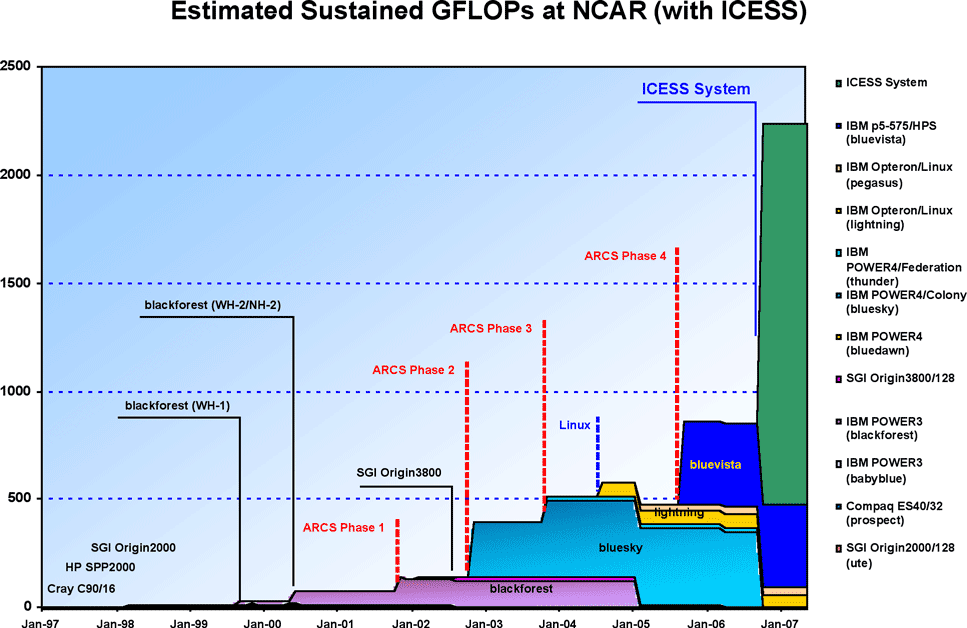The mission of NCAR is to support, enhance, and extend the capabilities of the university community, nationally and internationally, to understand the behavior of the atmosphere and the global environment and to foster the transfer of knowledge and technology for the betterment of life on Earth.3 NCAR is a principal provider of high performance computing services for the academic geosciences community in the United States and has a 48 year record of providing community supercomputing services. Over the years, NCAR and the community it serves has contributed centrally to
- The scientific underpinnings of numerical weather forecast and climate modeling;
- The understanding of the coupled ocean/atmosphere climate system;
- The detailed chemistry of the stratosphere and troposphere;
- Solar magnetism, helioseismicity, and solar coronal mass ejections;
- The dynamics and chemistry of the upper atmospheres of earth and other planets;
- The microphysics of clouds and convective processes;
- The socioeconomic impacts of climate change and severe weather; and
- The role of human activities in causing and responding to large-scale Earth system change
Computing continues to be an essential part of NCAR’s work and the center has a commitment to end-to-end services, spanning high-performance computing, application development and user support services, data management and data curation, visualization, networking, middleware, and all the components of what is commonly referred to as “cyberinfrastructure.” The emphasis at NCAR is on solving computing problems related to the geosciences, and NCAR computational architecture acquisition and system support decisions are centered on the needs of this large but finite scientific domain. Human capital development is an essential part of this commitment.
In a similar fashion to NERSC, NCAR favors a balanced approach to high performance computing, stressing robust operational performance of diverse computing platforms with regular upgrade paths (Fig. 4), sophisticated application development, attention to software reuse and application portability with careful verification pathways, computational efficiency, redundant mass storage and secure data management systems. NCAR has experienced many of the same trends and challenges reported by NERSC, including the move to larger and more interdisciplinary teams of investigators, the need to close the gap between “sustained” and “peak” performance, and the requirement for matching the data system performance with application needs.

NCAR supports a “Community Model” approach that is perhaps unique among the large computational centers in the United States. This approach involves the development of well supported, open-source, large scope codes that have lifetimes of years to decades, are regularly enhanced and updated to reflect emerging scientific needs, and are managed and driven by the broad academic community, with NCAR playing the key coordinating role. NCAR’s community models are freely available to all and are supported with help desks, version control systems, extensive documentation, regular user tutorials and workshops, and a significant body of peer-reviewed publications describing both computational and scientific aspects. Important examples of NCAR-managed community models include the Community Climate System Model, the Weather Research and Forecast Model, and the Earth System Modeling Framework. Brief descriptions of these three community science activities at NCAR are provided below to illustrate how NCAR supports national user communities.






